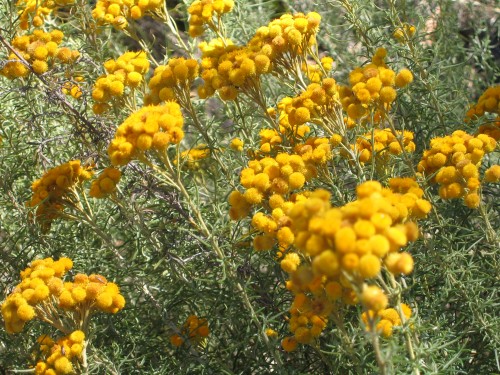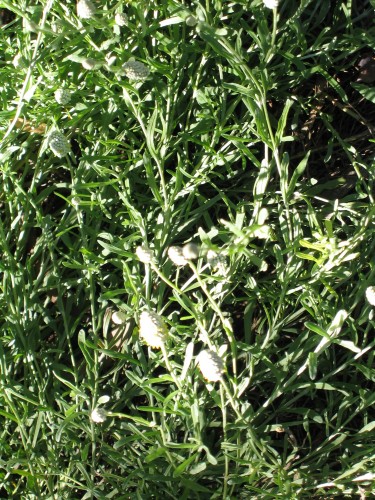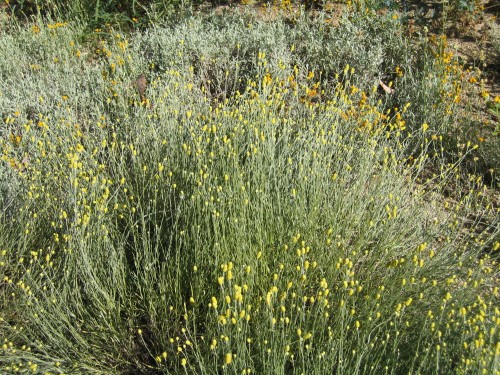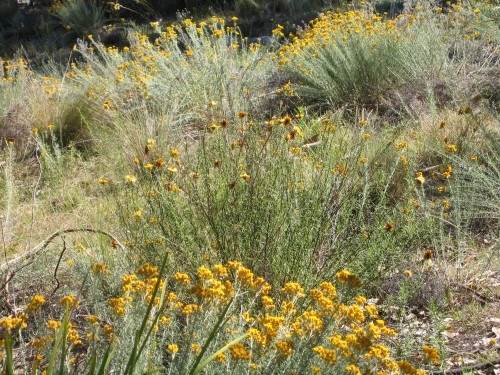
Chrysocephalum semipapposum (Clustered Everlasting)
This is one of my favourite plants and it is a member of the daisy family. Members of The Daisy Study Group had several forms of Chrysocephalum semipapposum growing. Chrysocephalum used to be Helichrysm.
It is a variable species with grey to green leaves which vary in width from quite fine to a coarser leaved form. It has clusters of small yellow flowers, which, if picked quite early in the flowering stage, will keep as an everlasting. If picked to late the flower will continue to open and the seeds will fluff out.
The plants grow from 50-80cm tall and make clumps up to a metre wide. Flowering is from Spring through to autumn so they are good value in the garden, especially in a cottage garden setting. The plants shoot from the bottom, so when the first signs of shooting appear, it is time to chop the clumps back to the new growth.
This plant is hardy in most situations and grows in full sun to filtered or part sun. It withstands periods of dryness but does best with extra moisture. The plant is suitable for heavy clay, loams and sand.




